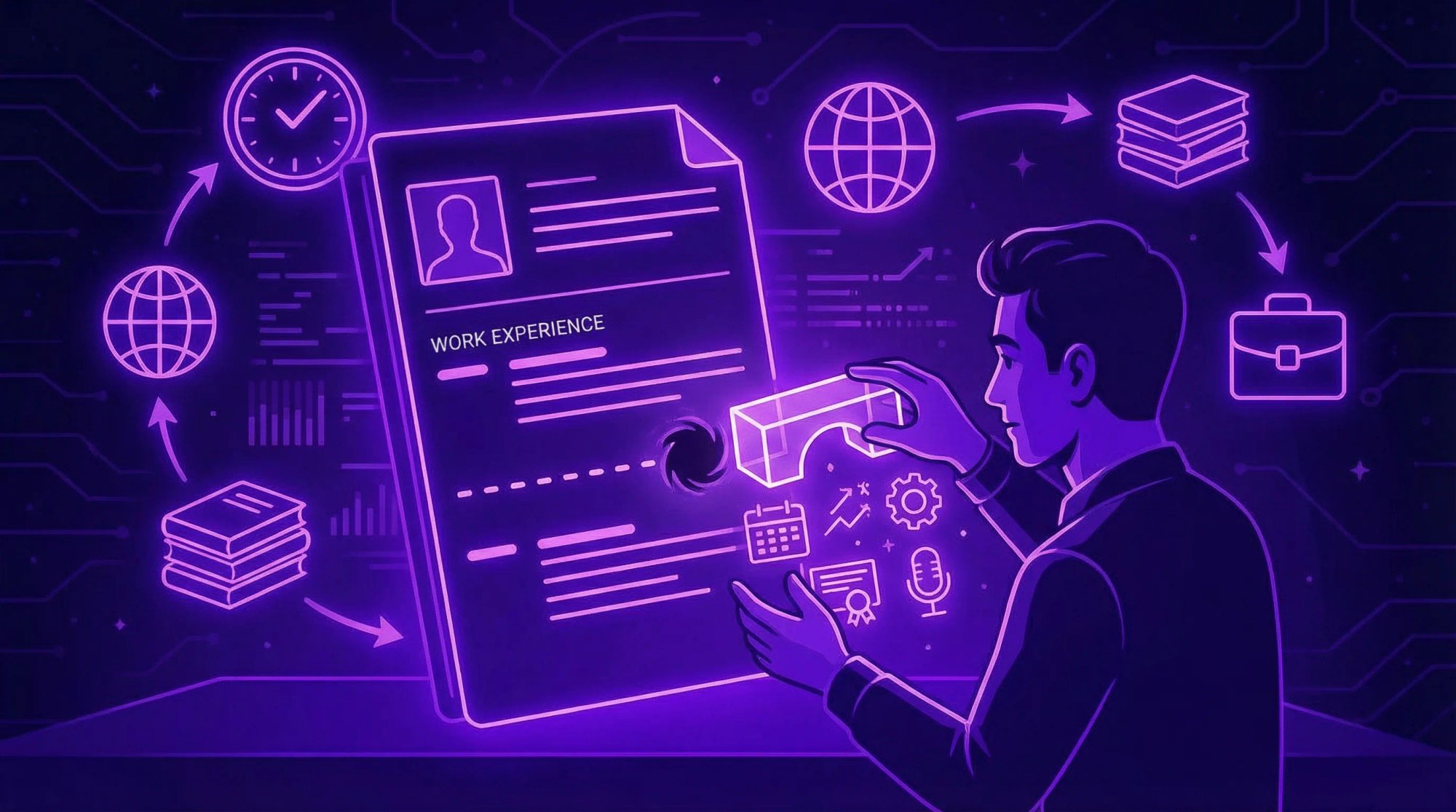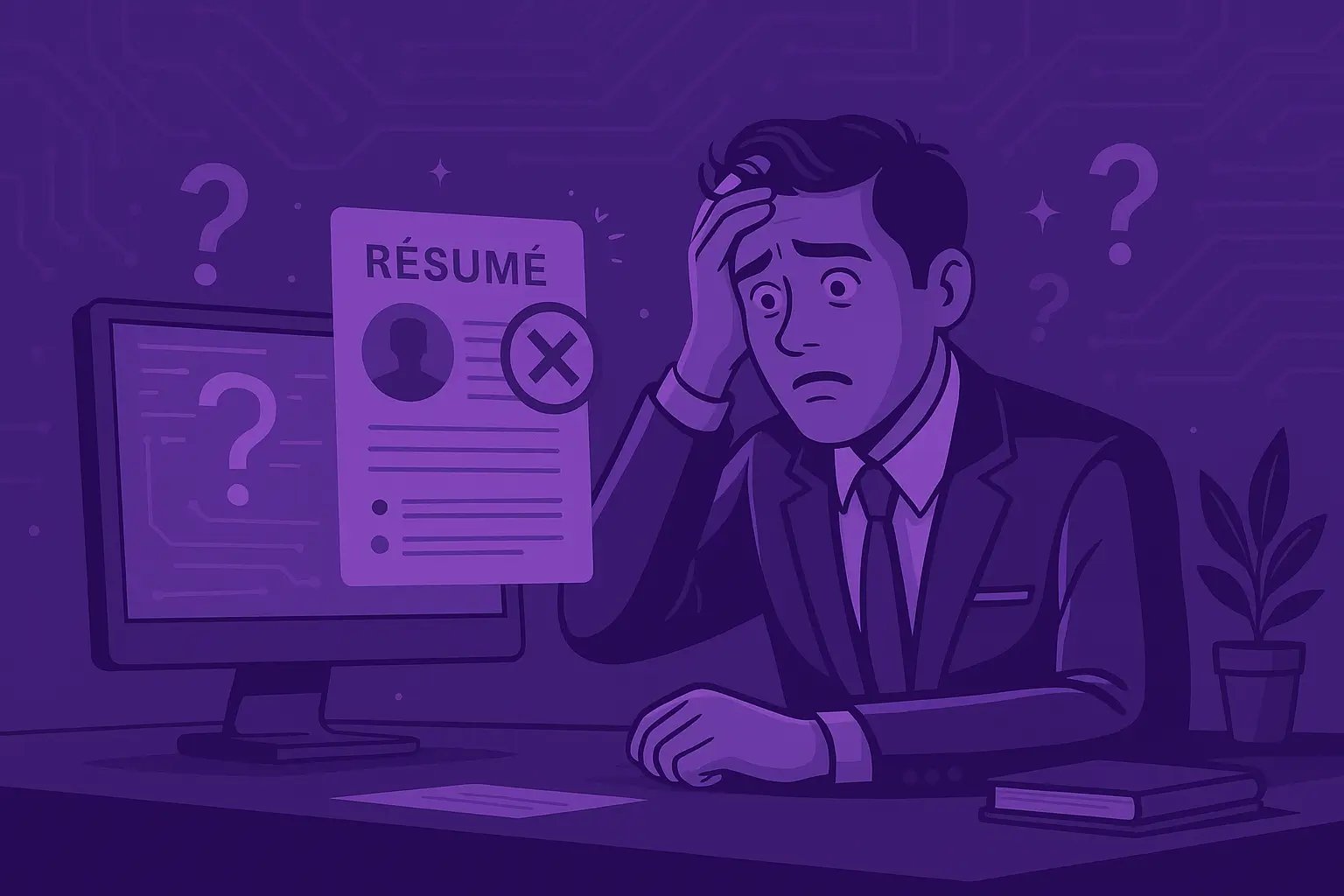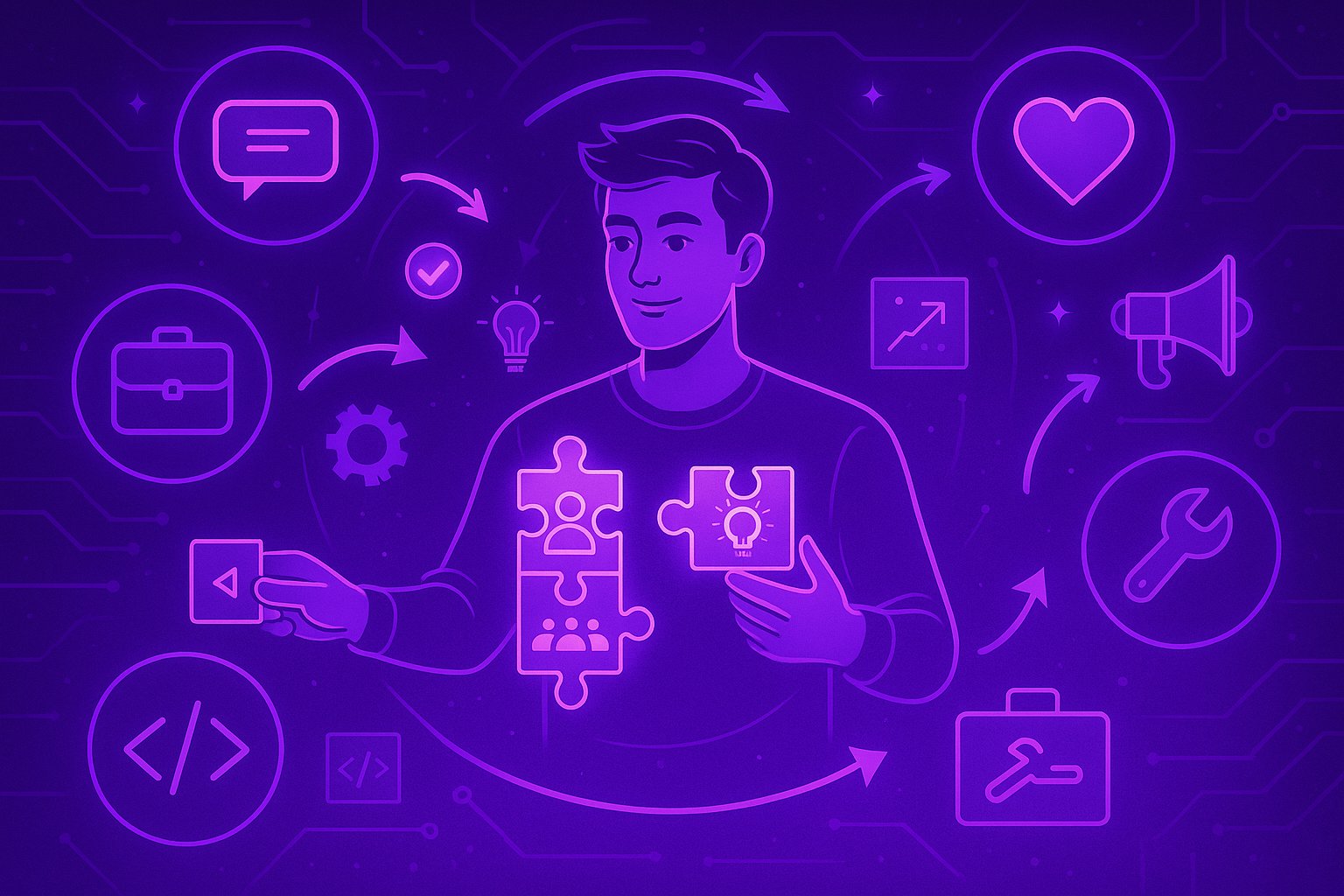A Guide to Writing a Thank You Email After an Interview

Your job interview could be by phone, in-person, or video.
Regardless, you should send a thank you email after that job interview.
It’s a small gesture that could make a significant impact.
A post-interview thank you email shows your interest in the position. It also highlights your professionalism and class.
Above all, it keeps the lines of communication open. If they want you, they know how to easily find you again.
But what do you say? How do you write this email?
I’ll show you.
Timing is Everything
Send your thank you email within 24 hours of the interview. If you procrastinate, you may never send the email at all. That’s a mistake.
Another mistake is losing the momentum of the interview by sending your email late.
Other benefits of being prompt with your response:
- Shows enthusiasm for the position.
- Builds rapport with the decision-makers.
- Keeps you memorable and in their thoughts.
- Addresses any gaps in your presentation.
- Increases your chances of getting the job.
Writing the Subject Line
The first thing the interviewer is going to read is the subject line. That line is the first impression they’ll get of you after the interview. First impressions matter.
Make your subject line professional and informative. State the purpose of the email clearly and directly.
Items you can include in the subject line (not all are necessary—just be brief):
- “Thank you.”
- Your name.
- The word “interview.”
- The title of the job position.
- The date of the interview.
Example Subject Lines
- "Thank You – John Smith Interview for Marketing Manager, April 18"
- "Thank You for the Interview on April 18, Jane Doe"
- "Appreciation for the Interview Opportunity – [Your Name]"
- "Thank You | [Your Name] for [Job Title] Position"
- "April 18 Interview – Thank You from [Your Name]"
Properly Addressing the Email
This step is crucial, so take extra care with it. You don’t want to annoy your interviewer right from the start by getting their information wrong.
Here are some guidelines to follow:
Verify Spelling in Advance: Make sure that you have the correct spelling of the interviewer's name, title, company… everything.
Typos in such an email are unprofessional and cause concern for your attention to detail. It makes the reader think you don’t care enough to do a good job.
Keep It Professional: Even if the interview was casual, maintain professionalism in your salutation to show respect. These are business acquaintances, not your friends.
Use a Formal Salutation: Start with a formal greeting such as "Dear," followed by the interviewer's title (Mr., Ms., Dr., etc.) and last name. For example, "Dear Mr. Smith,".
Respect Their Position: If the person holds a particular office or rank, use the appropriate title, such as "Dear Director Smith" or "Dear Professor Smith.”
If you are unsure of their preferred title, it's acceptable to use their full name without a title, like "Dear Jordan Smith.”
Better yet, do some research. Call the company and find out what you need to know: title, spelling—the whole works.
How to Structure the Email
After you’ve addressed your thank-you email comes the main message.
You’ll want to keep the tone and style professional yet personal.
IMPORTANT: Your email should be brief and to the point. A few short paragraphs are enough. Don’t overdo it and bore them. If they lose interest, you might lose the job.
Writing the Opening
First of all, express appreciation. Thank them for their time and the opportunity to learn more about the role and the company. They want to know that you didn’t waste their time and that you got something from the interview. Be gracious.
Writing the Body
- Reaffirm your interest in the job. Briefly reinforce why you are interested in the position and how you believe your skills and experiences align with the company’s goals.
- This is an excellent time to personalize the email to make you stand out from the other candidates.
- Include the date of the interview and the position you’re applying for.
- Be sure to mention specific topics or memorable discussions from the interview. This will spur their memory and the impression you made on them.
- You can also add any details or ideas omitted during the interview. Make sure to tell them anything else they need to know about you, like additional qualifications, skills, or experience that didn’t get mentioned in your interview.
Writing the Closing
As always, close professionally. End with a brief sentence or two. Add your contact information and offer to provide any additional information if needed.
Proofreading and Sending
It is essential that you proofread the email several times. If you can, ask someone else to read it and make sure you haven’t missed any errors. Then read it again before you hit “Send email.”
A Sample Thank-You Email Template
Subject: Thank You for the Interview – [Your Name] for [Position Title], [Interview Date]
Dear [Interviewer's Name],
I wanted to extend my heartfelt thanks for the opportunity to interview for the [Position Title] with [Company Name] yesterday. It was a pleasure to learn more about the team’s goals and discuss how my background in [Your Field/Expertise] aligns with the company's future projects.
I particularly enjoyed our conversation about [Specific Topic Discussed] and am excited about the prospect of bringing my skills in [Your Skills/Experience] to contribute to your team’s success.
Please feel free to reach out if you need any more information from my side to assist with your decision-making process. Thank you once again for considering my application. I am very enthusiastic about the possibility of joining your esteemed team and contributing to [Company Goal or Value Discussed].
Warm regards,
[Your Full Name]
[Your Contact Information]
Automating Your Job Search with aiapply.com
The amount of typing and paperwork involved in a serious job search is enormous.
Wouldn’t it be great to automate the creation of the many résumés, cover letters, and follow-up “thank you” letters it takes to get a job?
AiApply exists to do just that. We automate the entire job search process using the power of AI—from job board to résumé translation and more.
What matters most is tailoring each résumé, cover letter, and follow-up email to the specific job description. If you don’t, your application is likely to be rejected. It’s that simple.
You also need to format your résumé to be ATS-friendly. The ATS (Application Tracking System) is a computer app that checks your résumé for related, job-specific keywords. If the system finds no or few matches, your application is rejected. Again, that’s just the way it is.
AiApply takes your current résumé or CV, compares it with a job description that you provide, and automatically generates a custom-tailored application kit. You get a targeted résumé, cover letter, and follow-up email in seconds.
If you apply for even one job, this is a great way to save time, effort, and worry. Applying for multiple jobs? Just think of how much effort is eliminated while keeping quality at its peak.
Plus, you are 80% more likely to get hired if you use aiapply.
Try AiApply out for free today.
Your job interview could be by phone, in-person, or video.
Regardless, you should send a thank you email after that job interview.
It’s a small gesture that could make a significant impact.
A post-interview thank you email shows your interest in the position. It also highlights your professionalism and class.
Above all, it keeps the lines of communication open. If they want you, they know how to easily find you again.
But what do you say? How do you write this email?
I’ll show you.
Timing is Everything
Send your thank you email within 24 hours of the interview. If you procrastinate, you may never send the email at all. That’s a mistake.
Another mistake is losing the momentum of the interview by sending your email late.
Other benefits of being prompt with your response:
- Shows enthusiasm for the position.
- Builds rapport with the decision-makers.
- Keeps you memorable and in their thoughts.
- Addresses any gaps in your presentation.
- Increases your chances of getting the job.
Writing the Subject Line
The first thing the interviewer is going to read is the subject line. That line is the first impression they’ll get of you after the interview. First impressions matter.
Make your subject line professional and informative. State the purpose of the email clearly and directly.
Items you can include in the subject line (not all are necessary—just be brief):
- “Thank you.”
- Your name.
- The word “interview.”
- The title of the job position.
- The date of the interview.
Example Subject Lines
- "Thank You – John Smith Interview for Marketing Manager, April 18"
- "Thank You for the Interview on April 18, Jane Doe"
- "Appreciation for the Interview Opportunity – [Your Name]"
- "Thank You | [Your Name] for [Job Title] Position"
- "April 18 Interview – Thank You from [Your Name]"
Properly Addressing the Email
This step is crucial, so take extra care with it. You don’t want to annoy your interviewer right from the start by getting their information wrong.
Here are some guidelines to follow:
Verify Spelling in Advance: Make sure that you have the correct spelling of the interviewer's name, title, company… everything.
Typos in such an email are unprofessional and cause concern for your attention to detail. It makes the reader think you don’t care enough to do a good job.
Keep It Professional: Even if the interview was casual, maintain professionalism in your salutation to show respect. These are business acquaintances, not your friends.
Use a Formal Salutation: Start with a formal greeting such as "Dear," followed by the interviewer's title (Mr., Ms., Dr., etc.) and last name. For example, "Dear Mr. Smith,".
Respect Their Position: If the person holds a particular office or rank, use the appropriate title, such as "Dear Director Smith" or "Dear Professor Smith.”
If you are unsure of their preferred title, it's acceptable to use their full name without a title, like "Dear Jordan Smith.”
Better yet, do some research. Call the company and find out what you need to know: title, spelling—the whole works.
How to Structure the Email
After you’ve addressed your thank-you email comes the main message.
You’ll want to keep the tone and style professional yet personal.
IMPORTANT: Your email should be brief and to the point. A few short paragraphs are enough. Don’t overdo it and bore them. If they lose interest, you might lose the job.
Writing the Opening
First of all, express appreciation. Thank them for their time and the opportunity to learn more about the role and the company. They want to know that you didn’t waste their time and that you got something from the interview. Be gracious.
Writing the Body
- Reaffirm your interest in the job. Briefly reinforce why you are interested in the position and how you believe your skills and experiences align with the company’s goals.
- This is an excellent time to personalize the email to make you stand out from the other candidates.
- Include the date of the interview and the position you’re applying for.
- Be sure to mention specific topics or memorable discussions from the interview. This will spur their memory and the impression you made on them.
- You can also add any details or ideas omitted during the interview. Make sure to tell them anything else they need to know about you, like additional qualifications, skills, or experience that didn’t get mentioned in your interview.
Writing the Closing
As always, close professionally. End with a brief sentence or two. Add your contact information and offer to provide any additional information if needed.
Proofreading and Sending
It is essential that you proofread the email several times. If you can, ask someone else to read it and make sure you haven’t missed any errors. Then read it again before you hit “Send email.”
A Sample Thank-You Email Template
Subject: Thank You for the Interview – [Your Name] for [Position Title], [Interview Date]
Dear [Interviewer's Name],
I wanted to extend my heartfelt thanks for the opportunity to interview for the [Position Title] with [Company Name] yesterday. It was a pleasure to learn more about the team’s goals and discuss how my background in [Your Field/Expertise] aligns with the company's future projects.
I particularly enjoyed our conversation about [Specific Topic Discussed] and am excited about the prospect of bringing my skills in [Your Skills/Experience] to contribute to your team’s success.
Please feel free to reach out if you need any more information from my side to assist with your decision-making process. Thank you once again for considering my application. I am very enthusiastic about the possibility of joining your esteemed team and contributing to [Company Goal or Value Discussed].
Warm regards,
[Your Full Name]
[Your Contact Information]
Automating Your Job Search with aiapply.com
The amount of typing and paperwork involved in a serious job search is enormous.
Wouldn’t it be great to automate the creation of the many résumés, cover letters, and follow-up “thank you” letters it takes to get a job?
AiApply exists to do just that. We automate the entire job search process using the power of AI—from job board to résumé translation and more.
What matters most is tailoring each résumé, cover letter, and follow-up email to the specific job description. If you don’t, your application is likely to be rejected. It’s that simple.
You also need to format your résumé to be ATS-friendly. The ATS (Application Tracking System) is a computer app that checks your résumé for related, job-specific keywords. If the system finds no or few matches, your application is rejected. Again, that’s just the way it is.
AiApply takes your current résumé or CV, compares it with a job description that you provide, and automatically generates a custom-tailored application kit. You get a targeted résumé, cover letter, and follow-up email in seconds.
If you apply for even one job, this is a great way to save time, effort, and worry. Applying for multiple jobs? Just think of how much effort is eliminated while keeping quality at its peak.
Plus, you are 80% more likely to get hired if you use aiapply.
Try AiApply out for free today.
Don't miss out on
your next opportunity.
Create and send applications in seconds, not hours.








